Entries Tagged 'Science' ↓
March 30th, 2009 — Art, Medicine, Photography, Science
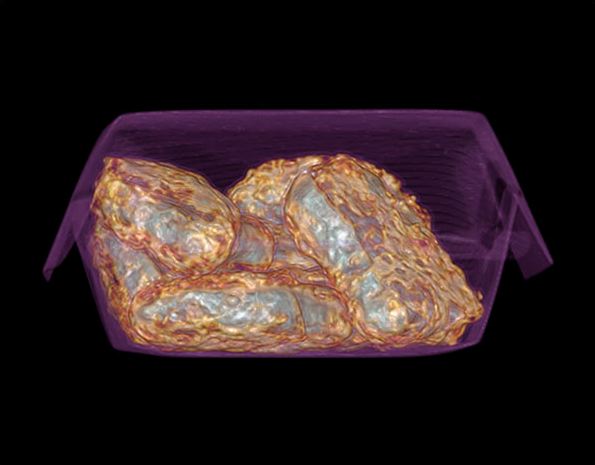
Most third-year students of medicine at Weill Cornell Medical College use a Computed Axial Tomography scanner for medical purposes. But for Satre Stuelke, the technology works best as a new form of camera. By running children’s toys, cell phones, and electrical appliances through this advanced scientific tool, Stuelke produces rather unearthly images, of a kind perhaps never before seen. Radiology Art, he calls it.
Continue reading →
February 2nd, 2009 — Photography, Science
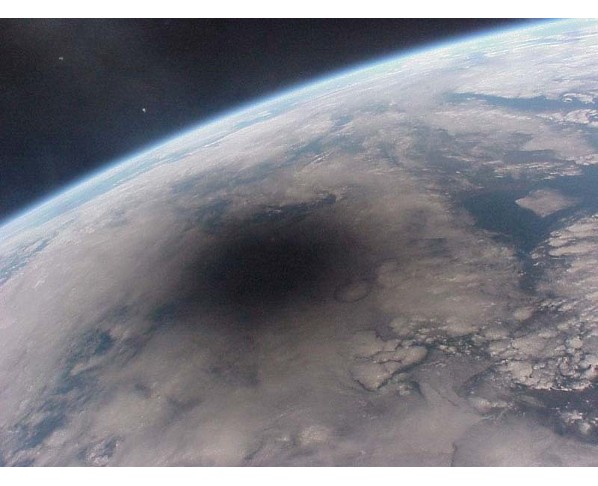
Here’s something you don’t see every day: A picture of Earth from space while a solar eclipse is taking place. During this phenomenon, the moon comes between the Earth and the sun. In certain positions, the moon blocks the solar disk almost perfectly, casting this moon shadow upon our planet.
Somebody should put a giant, quadrillion-ton raw steak on that Earth. It’ll bring down the swelling.
[via current.com]
January 30th, 2009 — Medicine, NONFICTION, Science
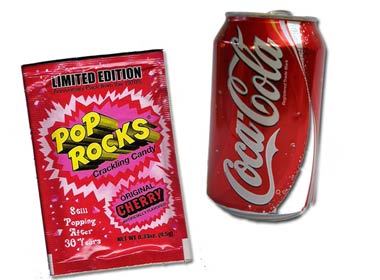
Trembling at the toxic and terrifying sight, above?
Everybody knows what these two substances can do in combination with each other. That is, throw down a mouthful of Pop Rocks. Then, chase it with several gulps of soda. Wave goodbye to your family and your record collection, because your stomach is about to explode, killing you.
Really?
Andrea and Julia Ditkoff, 12 and 10, respectively, had a lot of questions like that one:
Why do you get a headache when you eat ice cream too quickly?
What’s that small, dewdrop-shaped thing in the back of your throat?
Why do people hiccup?
…not to mention the one that forms the title of their mother’s new book, Why Don’t Your Eyelashes Grow?: Curious Questions Kids Ask About the Human Body, by Dr. Beth Ann Ditkoff.
In fact, they came up with all the interrogatives Dr. Ditkoff uses in her text. She thought her daughters’ queries were, indeed, provocative, but commonplace. (That combining Pop Rocks and soda will kill you is a 30-year-old, urban myth.) Other children, and other adults, would want to hear the answers.
They will: Dr. Ditkoff is the guest today on my WBAI-NY / 99.5 FM radio show, NONFICTION, this afternoon, Friday, January 30, at 2 pm ET. We’ll be speaking with her, live, on the air, during the first half of the hour. Then, during the second half, we’ll take your calls over our master control studio line: (212) 209-2900.
You can listen to this thoughtful writer / physician’s ideas by tuning in at 2 pm. If you’re outside of the New York tri-state, check out our stream on the web. If you miss the live show, dig into our archives for up to 90 days after broadcast.
January 27th, 2009 — Design, Satire, Science

Grad school can be tough enough without you having to pull rank. But when you absolutely have to do so—like, say your semester’s final joint term paper is due, and you need to let your chemistry lab partner know whose really running thangs—pimp slap them while wearing one of these Periodic Rings from It’s No Name.
Done up with each ring’s metal’s corresponding insignia from the famed table of elements, they’re available in silver ($280), gold, above ($2,350), and, for future Nobel prize winners only, platinum ($6,600). Aaahhhh, yeah: Sumn’s ’bout to go down, and it’s exothermic.
January 21st, 2009 — Politics, Science

If you went to Washington for the Obama inauguration without a ticket, but wanted a good view of all the proceedings, your only alternative was up—423 miles above the Earth’s surface.
As TechCrunch.com reports, describing the above photograph,
This is the first satellite image of the inauguration taken at 11:19 AM EST today by the GeoEye-1 satellite. This is the same satellite that supplies Google with images for Google Maps and Google Earth, so we may see this image show up there one day as well.
To give you a better sense of how powerful this technology is, click on the image, and you’ll see that those oblong, blurry, brown spots are people. Which means that, when it comes down to it, despite everything Obama said so well during his inaugural address about the power of the United States, Rockwell gets the last word.
January 2nd, 2009 — Race, Science

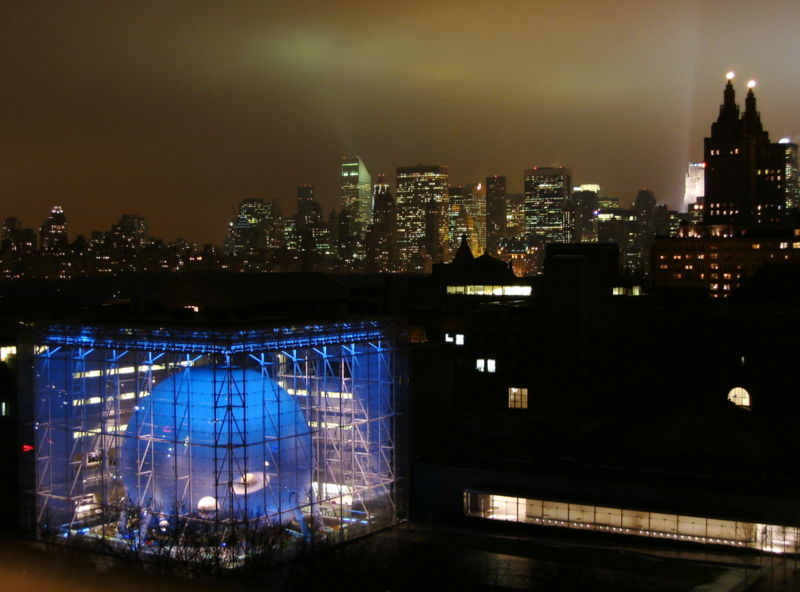 I don’t know how much you know about Dr. Neil deGrasse Tyson, above, astrophysicist and Frederick P. Rose Director of the American Museum of Natural History’s Hayden Planetarium, right, here in New York City, or if you know anything about him at all. Even though he’s a big guy, was a 2007 TIME 100 leader, and is on TV more than most scientists, you may not have noticed him, as most Americans don’t pay attention to the people who head knowledge-based organizations.
I don’t know how much you know about Dr. Neil deGrasse Tyson, above, astrophysicist and Frederick P. Rose Director of the American Museum of Natural History’s Hayden Planetarium, right, here in New York City, or if you know anything about him at all. Even though he’s a big guy, was a 2007 TIME 100 leader, and is on TV more than most scientists, you may not have noticed him, as most Americans don’t pay attention to the people who head knowledge-based organizations.
Yet, even if you hadn’t heard of him, you’ve lived on this planet long enough to know that, if someone, at random, asked you who’s the person that has run the nation’s best known public science education institution since 1996, you almost certainly wouldn’t think of a Black guy.
That fact led me to wonder: Is being Neil deGrasse Tyson a little bit like being Barack Obama?
I don’t mean in the sense of being the first African-American in his position, which he is. I mean in the sense of having to deal with white people.
That is, in certain surface ways, Obama and Tyson are somewhat similar. They’re 47 and 50, respectively. Both went to Columbia and Harvard. (Tyson also graduated from the exclusive Bronx High School of Science, and was on staff for three years at Princeton, where Michelle Obama went to college.) Both are physically dominant, good-looking, humorous men, noted for their easygoing manners. Both are married, with young children.
I guess what I’m wondering, though, even though, from a distance, I have some sense of it, is when you’ve got all that going for you, how does race affect your life?
 Like, for example, how much of that overt friendliness—ready humor, a wide smile, and a gentle (or big) laugh—is, though genuinely you, also a key way of putting white people at ease? Also, how much of your day is dedicated to that?
Like, for example, how much of that overt friendliness—ready humor, a wide smile, and a gentle (or big) laugh—is, though genuinely you, also a key way of putting white people at ease? Also, how much of your day is dedicated to that?
In their work, both Obama and Tyson deal with a lot of really smart people. But there have got to have been more than a few occasions, for them both, and especially for Tyson—whose CV has 29 sections, and who deals a lot with the aforementioned ignorant public—where they’ve been the smartest, or one of the smartest guys in the room, yet knew someone was talking down to them, or trying to go around them, because of their racial classification. (We’ve already discussed this happening to Obama.)
Neil deGrasse Tyson is the guest today on my WBAI-NY / 99.5 FM radio show, NONFICTION, this afternoon, Friday, January 2, at 2 pm ET.
In this repeat edition of the broadcast, Dr. Tyson, who’d stopped by WBAI to discuss his book, The Sky Is Not the Limit: Adventures of an Urban Astrophysicist, talks about some of these issues, while also discussing his love for both the universe and its methodical study.
You can hear his ideas by tuning in at 2 pm. If you’re outside of the New York tri-state, check out our stream on the web. If you miss the live show, dig into our archives for up to 90 days after broadcast.
December 29th, 2008 — Photography, Science
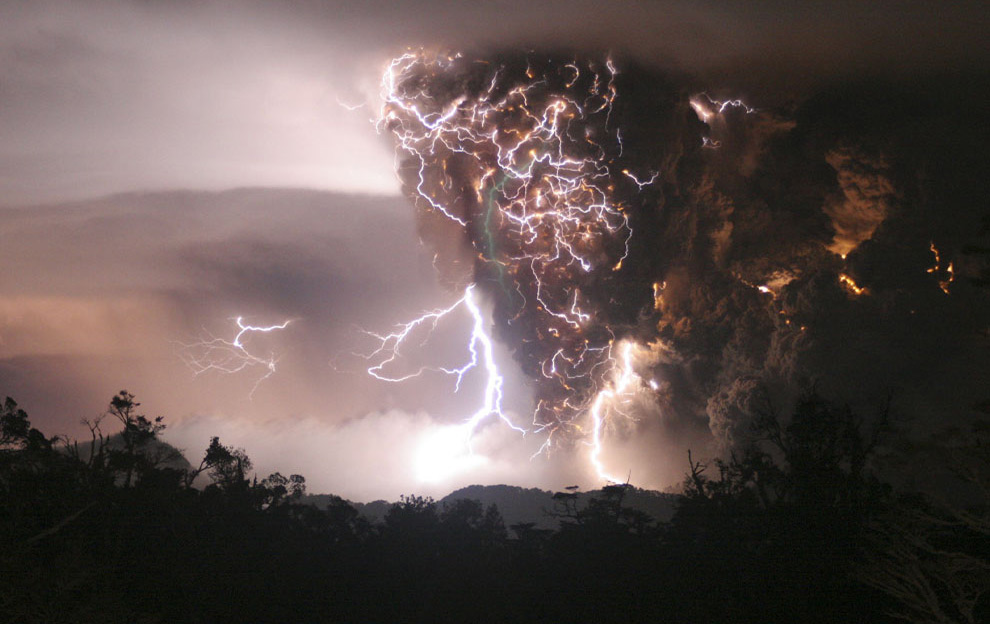
The Boston Globe‘s web site features some of 2008’s best photos, like this one, taken by Reuters’ Carlos Gutierrez on May 2. In it, lightning bolts shatter the ejected dust above the erupting Chaiten volcano in southern Chile. To give you a sense of scale, the image was snapped from a relatively safe 19 miles north of the light show.
“Cases of electrical storms breaking out directly above erupting volcanoes are well documented, although scientists differ on what causes them.”
Gotta love those scientists: Walking into the haunted house while everybody else runs the hell in the opposite direction.
December 23rd, 2008 — Photography, Science
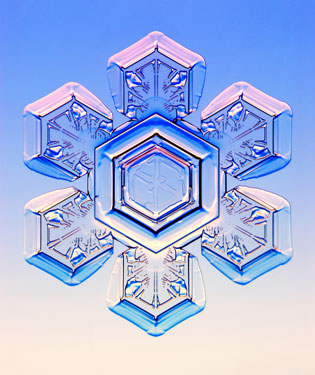
From New Scientist,
These snowflake photos were taken by Kenneth Libbrecht of CalTech, using a specially-designed snowflake photomicroscope. They show real snow crystals that fell to earth in northern Ontario, Alaska, Vermont, the Michigan Upper Peninsula, and the Sierra Nevada mountains of California.
The example above is called a stellar plate snowflake.
These are thin, plate-like crystals with six broad arms that form a star-like shape. Their faces are often decorated with amazingly elaborate and symmetrical markings.
Plate-like snowflakes form when the temperature is near -2 °C or near -15 °C. Such snowflakes are common.
Isn’t nature beautiful?
Guys, some advice: On Christmas, don’t waste your money on expensive diamonds. That’s just compressed carbon, dug out of old, dirty rocks in conflict-stricken lands.
Instead, when you’re walking through a snow-kissed lane, give that special girl of yours one of these immaculate jewels, a photomicroscope, and say, “I love you.”
You’ll be able to tell how she feels when she returns the favor…by dumping a couple billion more of them down your shirt as she walks away.
Oh: That’s not anger on her face. That’s passion.
Aaaahh…love.
Ah…Christmas.
[via Panopticist]
December 5th, 2008 — NONFICTION, Photography, Science
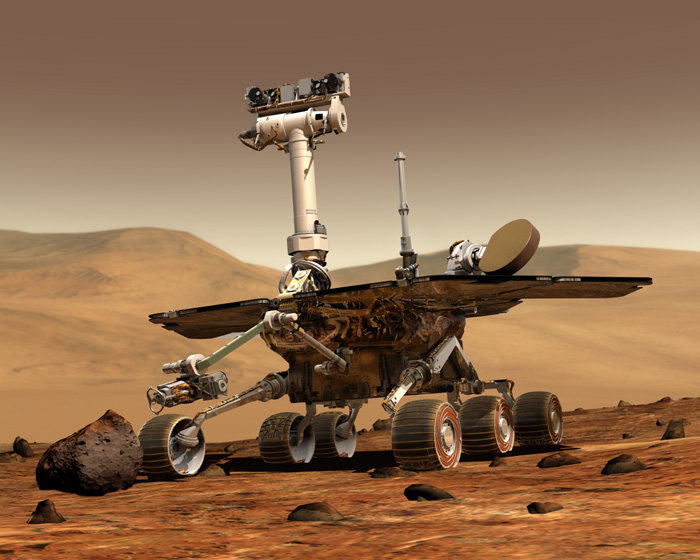
Is space exploration photography an art or a science?
Geologist Jim Bell, an associate professor of astronomy at Cornell University, lead scientist for the Panoramic Camera (Pancam) color imaging systems on the Mars Exploration Rover Mission (MERM), and creator of the book Postcards from Mars: The First Photographer on the Red Planet, would certainly say that the best space photos seamlessly combine compositional creativity with observational objectivity.
Bell’s Pancams are literally the eyes of the identical Spirit and Opportunity Mars rovers. (In the artist’s illustration, above, you can see the device perched atop the rover’s high, white, T-shaped mast.)
For example, this composite, panoramic image, below, taken by Opportunity about two years ago over a period of three Martian weeks, is of the Victoria Crater, on Mars’ Meridiani Planum, or meridian plain, near its equator.

It was shot, in pieces, bit by bit, from the Cape Verde promontory on the rim of the half-mile wide crater. (Click on it, or here, for a larger, more detailed view of this amazing planetary feature.) To accommodate these extremely wide shots, some of the gatefolds in Postcards from Mars are three feet wide.
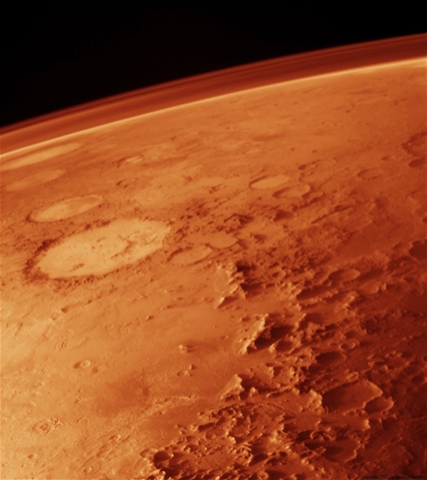 To create such images, the rovers have been operating continuously on the Red Planet’s surface since January 2004. Mars, right, is 150,000,000 miles from Earth—equal to the distance one would cover during a round-trip airplane flight 60 years long.
To create such images, the rovers have been operating continuously on the Red Planet’s surface since January 2004. Mars, right, is 150,000,000 miles from Earth—equal to the distance one would cover during a round-trip airplane flight 60 years long.
As such, the 150, literally otherworldy images in Postcards from Mars, fewer than 1/1,000th the total number taken by the crafts, are like vacation photos from a place no human has ever seen with her own eyes. That is, until NASA starts correcting decades of white-manned spaceflight by deeming the first humans to set foot on Mars will be Black females.
Jim Bell is the guest on this encore broadcast of my WBAI-NY / 99.5 FM radio show, NONFICTION, this afternoon, Friday, December 5, at 2 pm ET.
You can hear his lively and thoughtful ideas by tuning in at 2 pm. If you’re outside of the New York tri-state, check out our stream on the web. If you miss the live show, dig into our archives for up to 90 days after broadcast.
December 1st, 2008 — Food, Science

Tousle-headed Timmy is about to discover one of the worst taste combinations known to humanity: Fresh toothpaste-mouth washed down by orange juice.
Bleccchh. We’ve all accidentally combined the two. But why is it so awful?
Continue reading →












 To create such images, the rovers have been operating continuously on the Red Planet’s surface since January 2004. Mars, right, is 150,000,000 miles from Earth—equal to the distance one would cover during a round-trip airplane flight 60 years long.
To create such images, the rovers have been operating continuously on the Red Planet’s surface since January 2004. Mars, right, is 150,000,000 miles from Earth—equal to the distance one would cover during a round-trip airplane flight 60 years long.
